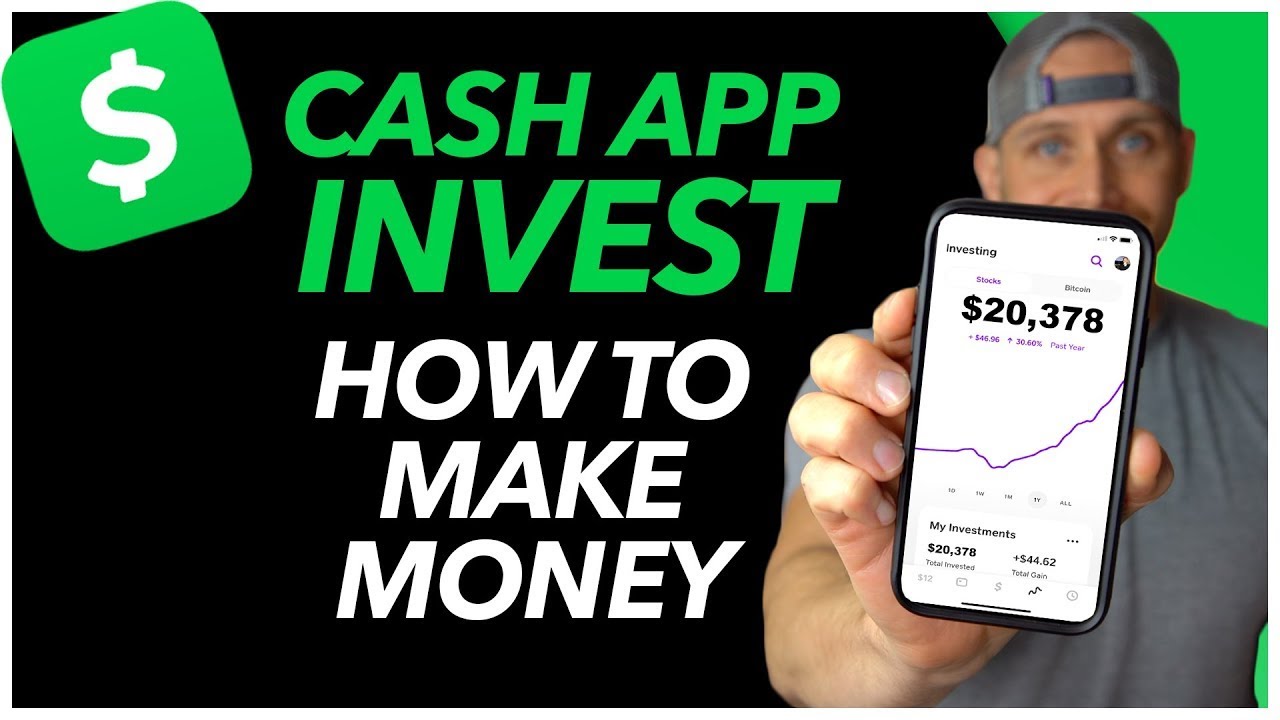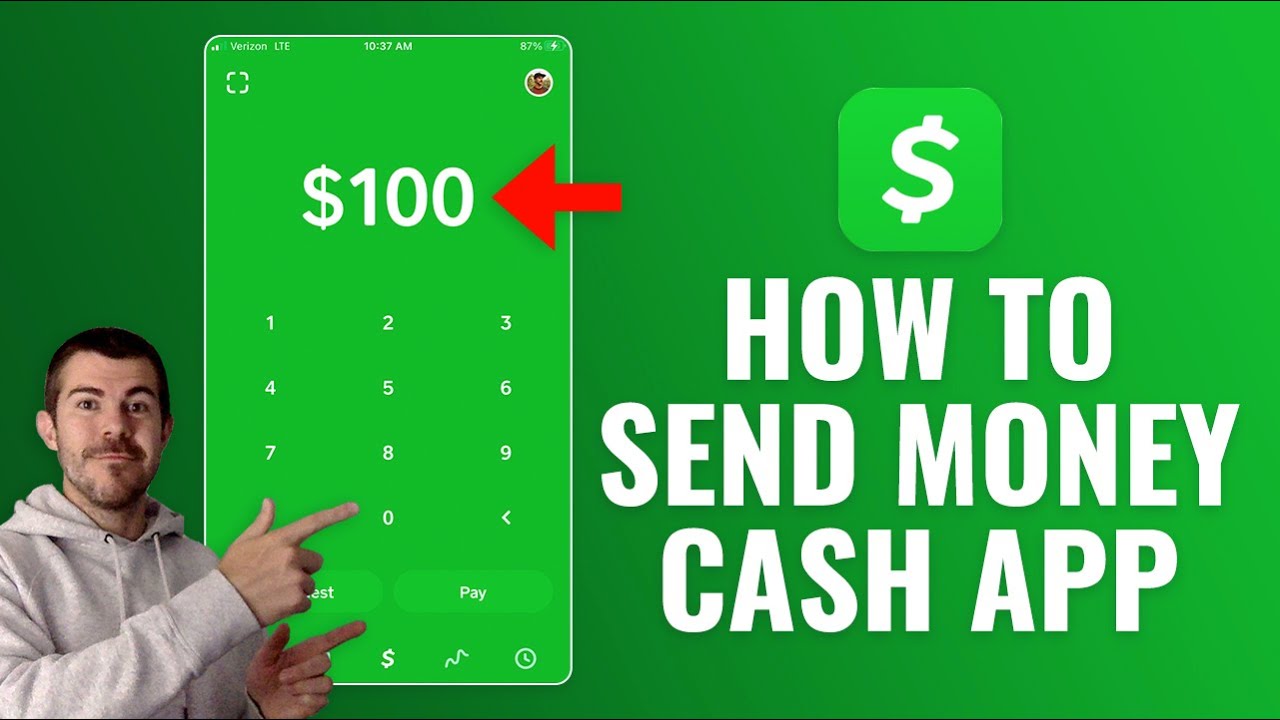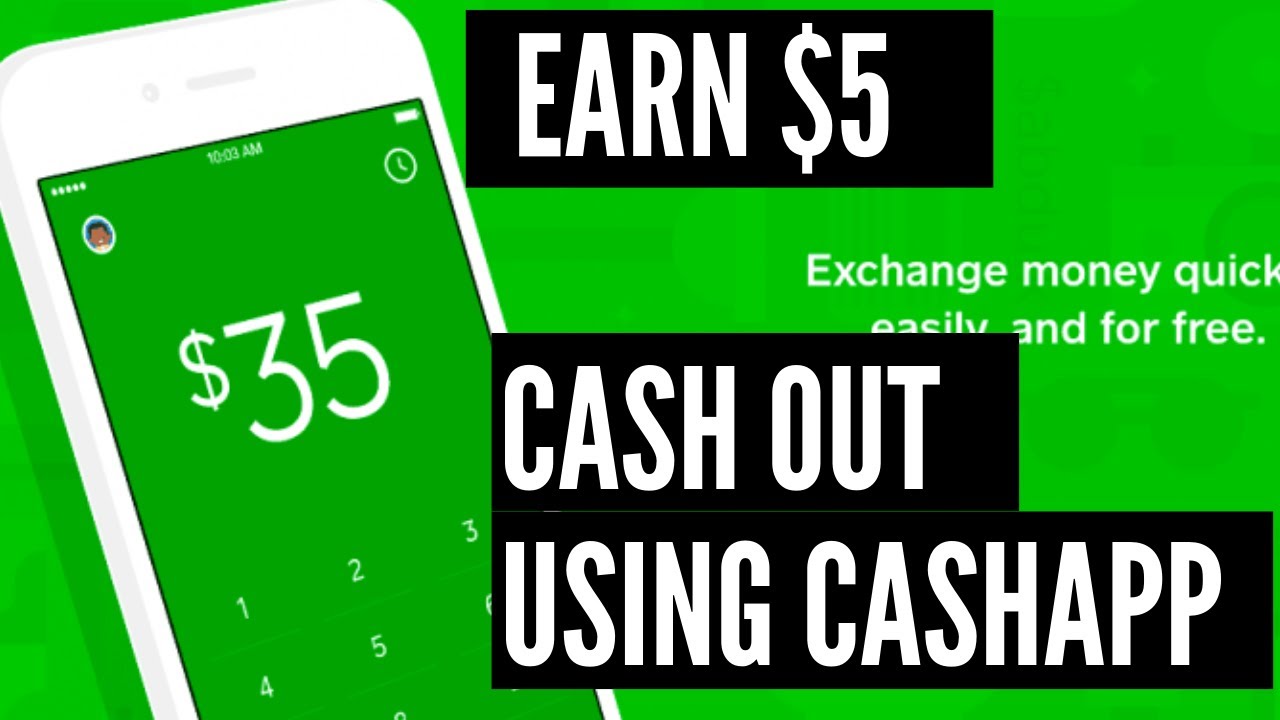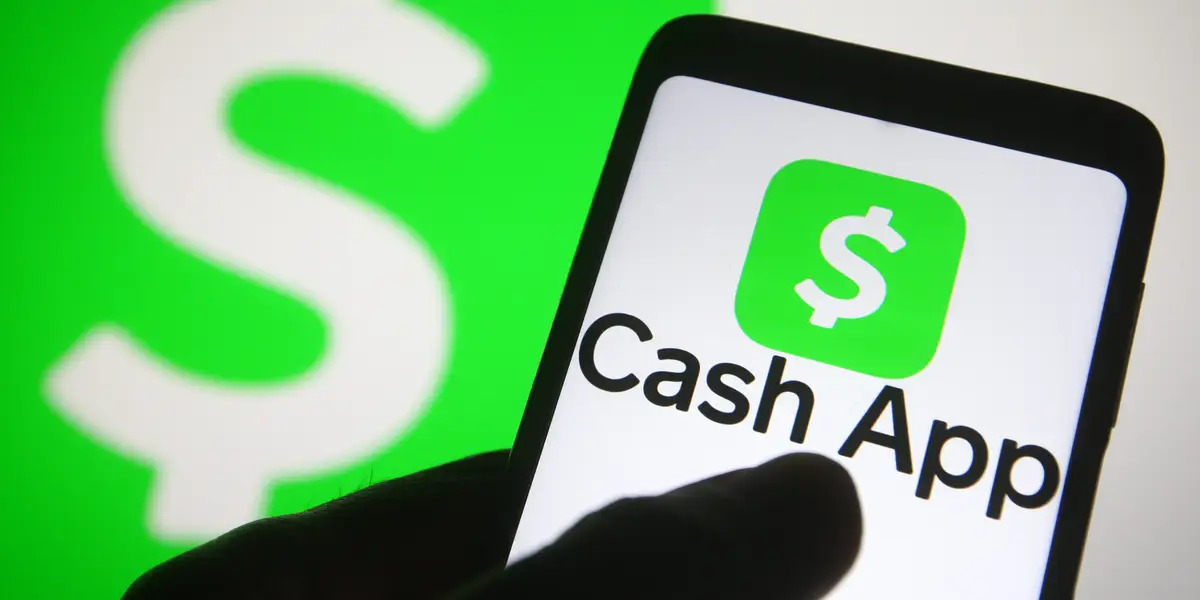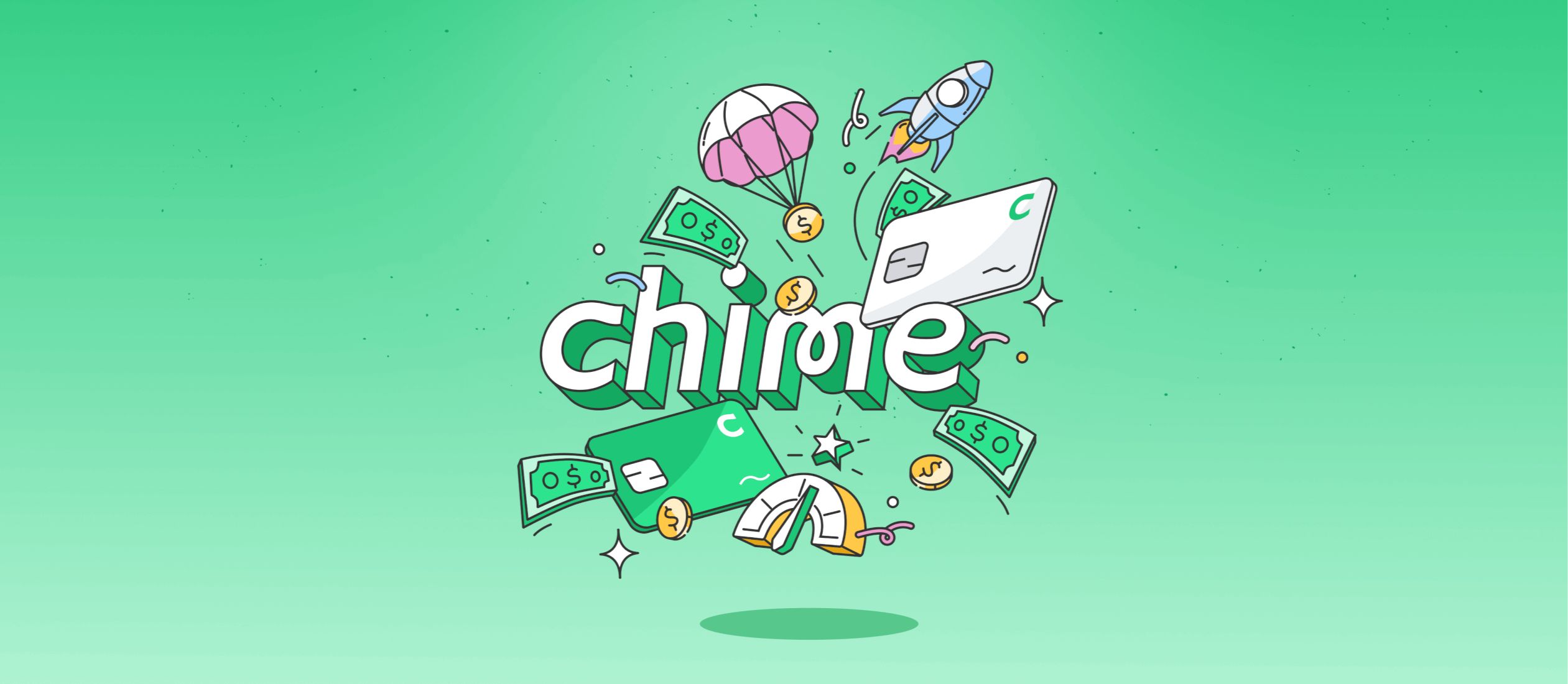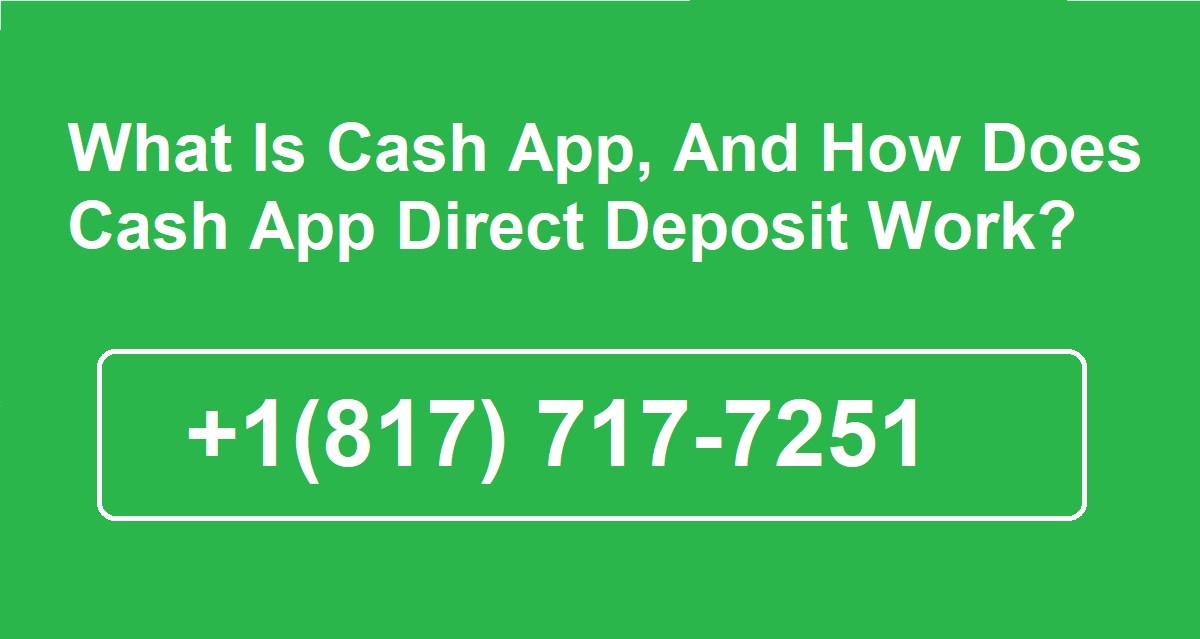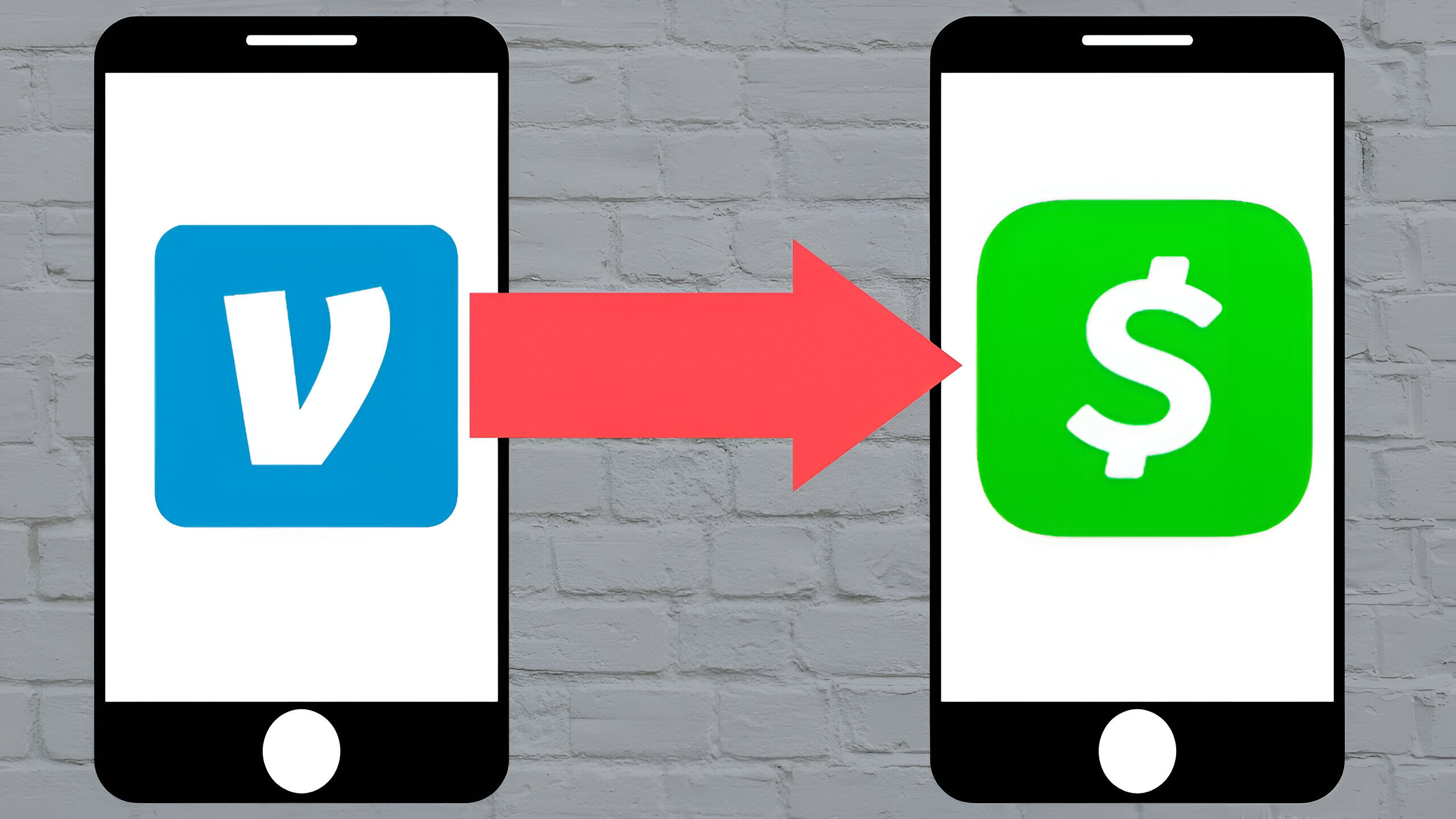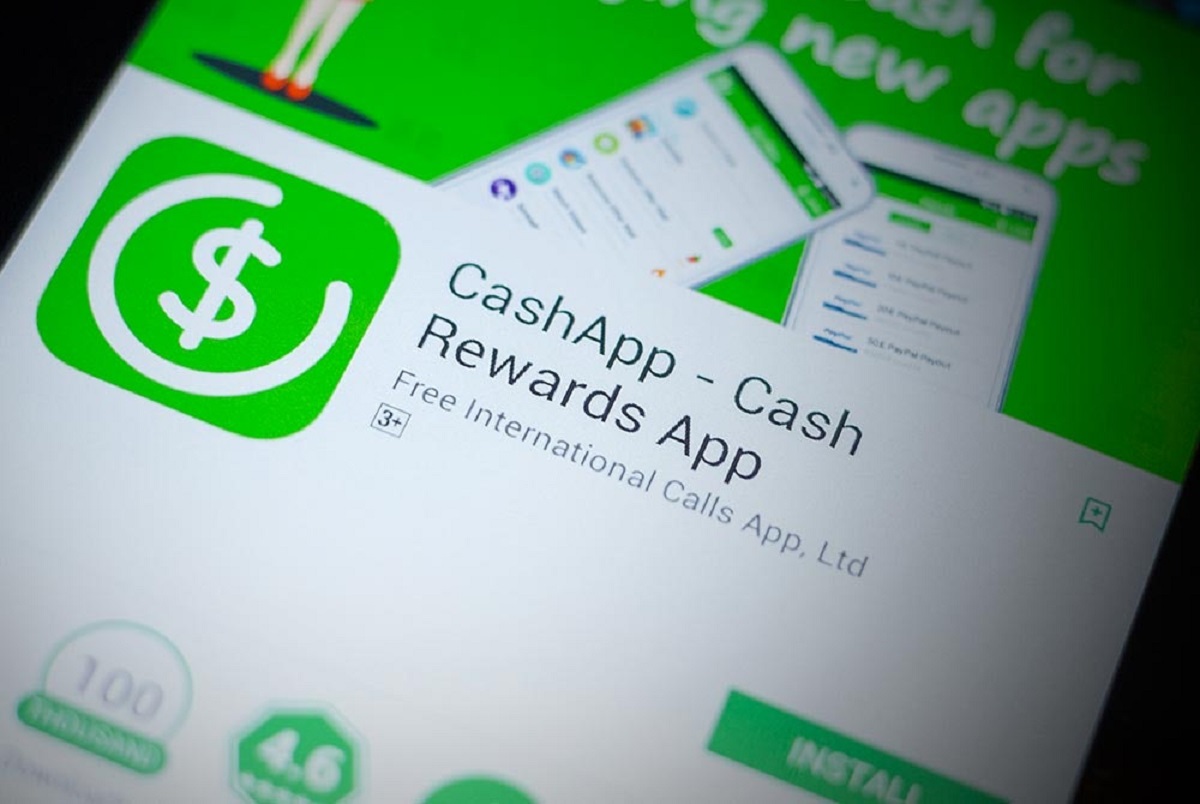Introduction
The rise of digital payment platforms has revolutionized the way we handle our finances, and one such platform that has gained immense popularity is Cash App. Developed by Square Inc., Cash App provides a convenient way to send, receive, and manage money right from your smartphone. Whether you want to split a bill with friends, pay your monthly utilities, or make online purchases, Cash App offers a user-friendly and secure solution.
Setting up a Cash App account is a breeze, and with just a few easy steps, you can start taking advantage of its wide range of features. Linking your bank account to Cash App allows for seamless transactions, eliminating the need for cash or physical cards. Additionally, Cash App provides a unique Cash App Card, which allows you to make purchases both online and in retail stores.
One of the key highlights of Cash App is its rewards program and cashback offers. By using the app for everyday transactions, you can earn rewards and receive cashback on eligible purchases. Furthermore, Cash App provides an investment feature that allows users to buy and sell stocks and Bitcoin.
Beyond the basic functionality of sending and receiving money, Cash App opens up opportunities for individuals to monetize their skills. Whether you’re a freelancer, artist, or entrepreneur, Cash App offers various tools and features to accept payments, sell products or services, and grow your business.
While using Cash App offers numerous benefits, it’s essential to prioritize security and fraud prevention. Cash App implements robust security measures, such as encrypted transactions and two-factor authentication, to protect user data and financial information.
In this comprehensive guide, we will dive into the various aspects of Cash App and explore how you can make the most of this platform to manage your finances, earn rewards, and monetize your skills. We will cover topics such as setting up a Cash App account, linking your bank account, sending and receiving money, understanding the Cash App Card, maximizing rewards and cashback, investing, monetization, security tips, and fee and limit information.
Setting up a Cash App Account
To get started with Cash App, you’ll need to download the app from the App Store or Google Play Store and create an account. Follow these steps to set up your Cash App account:
1. Download and Install: Search for “Cash App” in the App Store or Google Play Store, and tap on the download button to install the app on your smartphone.
2. Sign Up: Open the Cash App on your device and tap on the “Sign Up” button. You will be prompted to enter your phone number or email address.
3. Verification: Cash App will send a verification code to the phone number or email address you provided. Enter the code to verify your account.
4. Link a Debit Card: To enable transactions, you’ll need to link a debit card to your Cash App account. Tap on the “Banking” tab and select “Add Debit Card.” Enter your card details, including the card number, expiration date, and CVV.
5. Create a Cashtag: Cashtag is a unique username that others can use to send you money. Choose a Cashtag that reflects your identity or business. This can be your name, brand, or any custom phrase that is available.
6. Set up Security: Cash App provides optional security features like Touch ID and Face ID to protect your account. Enable these features for quick and secure access.
7. Customize your profile: Personalize your Cash App account by adding a profile picture and a brief bio. This helps others recognize and connect with you on the platform.
Once you have completed these steps, your Cash App account is set up and ready to use. You can now take advantage of the various features and functionalities to send and receive money, make purchases, and explore additional services.
It’s worth noting that Cash App is only available to users in the United States and the United Kingdom. If you are outside these regions, you may not be able to access the full functionality of Cash App.
In the next section, we will explore how to link your bank account to Cash App, allowing you to easily transfer funds between your Cash App balance and your bank.
Linking your Bank Account to Cash App
Linking your bank account to Cash App enables you to transfer funds between your Cash App balance and your bank with ease. Here’s how you can link your bank account:
1. Open Cash App: Launch the Cash App on your smartphone and tap on the profile icon at the top-left corner of the screen.
2. Select Banking: From the menu, tap on the “Banking” tab.
3. Add a Bank Account: Under the “Banking” section, tap on “Add a Bank.” Cash App will provide you with a list of supported banks. Alternatively, you can search for your bank using the search bar.
4. Enter your Bank Details: Follow the prompts to provide your bank account information. This typically includes your bank account number and routing number. Ensure the information you enter is accurate.
5. Verify your Bank Account: After entering your bank details, Cash App will initiate a verification process. This may involve linking your bank account via a micro-deposit verification or using your bank’s login credentials for instant verification.
6. Micro-deposit Verification: If you choose the micro-deposit verification method, Cash App will send two small deposits (usually under $1) to your bank account. Check your bank statement or contact your bank to find the exact amounts of these deposits. Once you have the deposit amounts, return to the Cash App and enter them to verify your account.
7. Instant Verification: Some banks allow for instant verification by logging in directly through Cash App. If your bank supports this method, you will be prompted to enter your online banking username and password. This information is securely encrypted.
8. Confirm Linking: After completing the verification process, Cash App will confirm that your bank account is successfully linked. You can now transfer funds between your Cash App balance and your bank account.
It’s important to note that Cash App may request additional information or documentation to verify your identity. This is a security measure to ensure the safety of your financial transactions.
Linking your bank account to Cash App provides you with the flexibility to deposit and withdraw funds, making it convenient for handling your finances. You can easily transfer money to pay bills, make purchases, or send money to friends and family.
Next, we will explore how to send and receive money using the Cash App.
How to Send and Receive Money with Cash App
Cash App makes it simple to send and receive money, whether you’re splitting a bill, reimbursing a friend, or receiving payment. Here’s a step-by-step guide on how to send and receive money using Cash App:
Sending Money:
1. Open Cash App: Launch the app on your smartphone and log into your account.
2. Tap the “$” icon: Located at the bottom center of the screen, this icon takes you to the “Send” page.
3. Enter the amount: Input the amount you want to send to the recipient. You can enter a specific amount or use the on-screen buttons to select a pre-set dollar amount.
4. Choose a recipient: Enter the recipient’s $Cashtag (their unique Cash App username), phone number, or email address. Alternatively, you can select them from your contact list if they are already a Cash App user.
5. Add a note (optional): Optionally, you can add a note to accompany the payment. It can be a description of the payment or any message you want to include.
6. Review and send: Double-check the details, including the amount and recipient, to ensure accuracy. Once you’re satisfied, tap the “Pay” button to send the money.
Receiving Money:
1. Open Cash App: Launch the app on your smartphone and log into your account.
2. Tap the “$” icon: Located at the bottom center of the screen, this icon takes you to the “Request” page.
3. Enter the amount: Input the amount you want to request from the sender. Similar to sending money, you can enter a specific amount or use the on-screen buttons to select a pre-set dollar amount.
4. Choose a recipient: Enter the recipient’s $Cashtag (their unique Cash App username), phone number, or email address. If they are already in your contact list, you can select them from there as well.
5. Add a note (optional): You can include a note with your request, providing additional information or context for the sender.
6. Send the request: Double-check the details and tap the “Request” button to send the payment request to the sender.
When sending or receiving money on Cash App, transactions are typically processed instantly. However, in some cases, it may take a little longer for the funds to be available, especially if there are any security checks or verifications required.
It’s important to note that Cash App allows you to send and receive money in multiple currencies. However, they may charge a small fee for currency conversion.
Now that you know how to send and receive money with Cash App, let’s explore the features and benefits of the Cash App Card.
Understanding the Cash App Card
The Cash App Card is a physical debit card linked to your Cash App account, providing you with a convenient way to make purchases and withdraw cash. Here’s what you need to know about the Cash App Card:
1. Requesting the Card: To get a Cash App Card, open the app on your smartphone and tap on the Cash Card tab. Follow the prompts to request your personalized card, which will be mailed to your registered address.
2. Activation: Once you receive your Cash App Card, it needs to be activated before use. Open the Cash App and navigate to the Cash Card tab. Tap on “Activate Cash Card” and follow the instructions provided.
3. Customization: Cash App allows you to customize your Cash Card by adding a unique signature or drawing on the front of the card. You can also choose different colors for the card in the app settings.
4. Funding the Card: The Cash App Card is linked to your Cash App balance. Before using the card for purchases or cash withdrawals, ensure that you have available funds in your Cash App account.
5. POS Transactions: You can use the Cash App Card for in-store purchases at any merchant that accepts Visa. Simply swipe or insert the card at the point of sale terminal and follow the prompts. You can also enable contactless payments by adding your Cash Card to popular mobile wallets like Apple Pay or Google Pay.
6. Online Transactions: The Cash App Card can be used for online purchases. When making an online payment, enter the card details (card number, expiration date, and CVV) as you would with any other debit or credit card.
7. Cash Withdrawals: With the Cash App Card, you can withdraw cash from ATMs. Look for ATMs that display the Visa logo, insert your card, enter your PIN, and follow the on-screen instructions. Be aware that ATM withdrawals may be subject to fees imposed by both Cash App and the ATM provider.
8. Cash Boost: Cash App offers a unique feature called Cash Boost, which allows you to earn instant discounts at select merchants when using your Cash Card. You can choose a Boost from a variety of options, such as a percentage off at coffee shops or discounts at popular retailers.
9. Transactions and Balance: Cash App provides real-time transaction notifications, allowing you to keep track of your purchases and monitor your Cash App balance. You can view your transaction history and current balance directly in the app.
The Cash App Card offers the convenience and versatility of a traditional debit card, giving you the freedom to make purchases and access funds from your Cash App account. Utilize the card for everyday expenses, online shopping, and even cash withdrawals, making it a valuable tool in managing your finances.
Next, we’ll take a closer look at how you can maximize rewards and cashback with Cash App.
Maximizing Cash App Rewards and Cashback
Cash App offers a variety of rewards and cashback opportunities that can help you save money and earn additional benefits. Here are some strategies to maximize your rewards and cashback with Cash App:
1. Cash Boost: Cash Boost is a feature that allows you to earn instant discounts at select merchants when using your Cash App Card. Take advantage of the available Boosts by selecting the ones that align with your regular spending habits. This can include discounts at coffee shops, restaurants, or popular retailers.
2. Regular Use: The more you use your Cash App Card for everyday transactions, the more rewards and cashback opportunities you’ll unlock. Make a conscious effort to use your Cash App Card for purchases whenever possible to maximize your earnings.
3. Refer-a-Friend: Cash App offers a referral program where you can earn rewards by inviting friends to join the platform. Share your unique referral code with friends and family and encourage them to sign up for Cash App. When they sign up and make their first qualifying transaction, both you and your friend can earn a referral bonus.
4. Promotional Offers: Keep an eye out for promotional offers and special deals provided by Cash App. These offers may include limited-time cashback rewards, exclusive discounts, or bonus rewards for specific spending categories.
5. Cash Boost Combos: Cash App allows you to stack multiple Cash Boosts to maximize your savings. By combining different Boosts, you can enjoy even greater discounts on your purchases. Experiment with different combinations to find the most beneficial ones for your spending habits.
6. Track your Rewards: Cash App provides a rewards summary that allows you to track your earnings and monitor the benefits you’ve received. Take advantage of this feature to understand how much you’ve saved and identify areas where you can further optimize your spending to maximize rewards.
Remember to review and understand the terms and conditions of each reward program or cashback offer. This can help you ensure that you meet the eligibility criteria and fully take advantage of the benefits available to you.
By actively seeking out and utilizing the rewards and cashback opportunities offered by Cash App, you can save money on your everyday expenses and earn additional benefits. Incorporate the above strategies into your spending habits to make the most of Cash App’s rewards program.
In the next section, we will explore how you can leverage Cash App as a platform for investing in stocks and Bitcoin.
Investing with Cash App
Cash App not only provides a convenient way to manage your day-to-day finances but also offers the opportunity to invest in stocks and Bitcoin. Here’s how you can leverage Cash App as a platform for investing:
1. Stocks: Cash App allows you to buy and sell stocks directly from the app. With fractional shares, you can invest in your favorite companies without needing to purchase a whole share. This makes investing in stocks more accessible and affordable for users with limited funds.
2. Bitcoin: Cash App also provides the option to buy, sell, and hold Bitcoin. Bitcoin is a popular form of digital currency, and Cash App makes it simple to invest in this asset. You can purchase Bitcoin with your Cash App balance or link a bank account for larger transactions.
3. Automatic Investing: Cash App offers the feature of automatic recurring investments. With this feature, you can set up regular investments into stocks or Bitcoin. This allows you to build your investment portfolio gradually and take advantage of dollar-cost averaging.
4. Market Data: Cash App provides real-time market data, including stock prices, charts, and news updates. This information can help you make informed investment decisions and stay updated on market trends.
5. Investing Education: Cash App offers educational resources and articles to help users understand investing concepts and make better-informed decisions. Take advantage of these resources to expand your knowledge and enhance your investment skills.
6. Safety and Security: Cash App prioritizes the security of your investment transactions. Your investment holdings are kept separate from the company’s assets and are held by their clearing partner. This ensures the safety of your investments.
When investing with Cash App, it’s important to keep in mind that investments come with inherent risks. It’s essential to educate yourself about the investment options available, evaluate your risk tolerance, and diversify your portfolio for optimal long-term growth.
Cash App provides a user-friendly and accessible platform for individuals interested in starting their investment journey. Whether you’re a novice investor or an experienced trader, Cash App offers a convenient way to participate in the stock market and explore the potential of digital currencies like Bitcoin.
In the next section, we will explore how you can monetize your skills and generate income using Cash App.
Monetizing your Skills using Cash App
Cash App not only serves as a platform for managing your finances and making transactions but also provides opportunities to monetize your skills and generate income. Here are some ways you can leverage Cash App to turn your skills into revenue:
1. Freelancing: If you’re a freelancer or offer services such as graphic design, writing, or web development, you can accept payments from clients directly through Cash App. Simply provide your clients with your $Cashtag or share a payment link, making it hassle-free for them to pay you for your work.
2. Art and Creativity: Cash App can be a great platform for artists to sell their artwork, prints, or digital creations. Use the Cash App Card reader to accept payments at art fairs or events, or share your $Cashtag with your followers on social media platforms to receive payments for your creative work.
3. Content Creation: If you’re a content creator, Cash App allows your followers or fans to support your work directly through the app. You can share your $Cashtag with your audience, encouraging them to show their appreciation by sending money as a token of support.
4. Online Courses or Consultations: If you’re an expert in a particular field, you can offer online courses or consulting sessions and accept payments through Cash App. Provide valuable insights and guidance to your clients or students, and facilitate seamless transactions through the app.
5. Social Media Influencing: If you have a significant following on social media platforms, you can leverage Cash App to monetize your influence. Collaborate with brands or businesses and promote their products or services to your audience. Use your $Cashtag to accept direct payments from your followers as a form of support or as a payment for sponsored content.
6. Donations: Cash App allows users to receive donations from their supporters. If you run a non-profit organization, support a cause, or simply want to accept support and contributions from your community, Cash App provides a streamlined way to collect donations.
Cash App enables you to receive payments quickly and securely, making it a valuable tool for individuals looking to monetize their skills or generate additional income. With its user-friendly interface and widespread adoption, Cash App provides a convenient and efficient way to accept payments, no matter what type of skills or services you offer.
Remember to communicate your $Cashtag to your clients, followers, or supporters and let them know that you accept payments through Cash App. Promote your services or products on your social media profiles or website, and provide a seamless payment experience for your customers or clients using Cash App.
In the next section, we will explore some important tips for maintaining security and preventing fraud while using Cash App.
Tips for Security and Fraud Prevention on Cash App
While Cash App provides a secure and reliable platform for managing your finances, it’s important to implement certain measures to protect yourself from potential security threats and fraud. Here are some tips to ensure the security of your Cash App account:
1. Enable Two-Factor Authentication: Enable two-factor authentication (2FA) for your Cash App account. This adds an extra layer of security by requiring a verification code, in addition to your password, when signing in to your account.
2. Use a Secure Password: Choose a strong and unique password for your Cash App account. Avoid using easily guessable passwords and consider using a password manager to securely store and generate complex passwords.
3. Verify Transactions: Regularly review your transaction history within the Cash App to identify any unauthorized or suspicious transactions. If you notice any unauthorized activity, report it to Cash App support immediately.
4. Be Cautious with Personal Information: Exercise caution when sharing personal information through Cash App or any other communication channels. Avoid sharing sensitive information, such as your Social Security number or full bank account details, unless necessary and with trusted sources.
5. Beware of Phishing Attempts: Be wary of phishing attempts where scammers try to trick you into revealing your Cash App login credentials or personal information. Avoid clicking on suspicious links or downloading attachments from unknown sources.
6. Verify Contacts: Before sending money to someone, always verify the recipient’s information. Double-check the $Cashtag, phone number, or email address to ensure accuracy. Scammers may attempt to impersonate others or create fake accounts to trick unsuspecting users.
7. Contact Cash App Support Directly: If you have any concerns or suspicions about your Cash App account, contact Cash App support directly. Avoid responding to unsolicited messages or calls claiming to be from Cash App. Only use the official contact information provided by Cash App.
8. Keep your App Updated: Regularly update the Cash App on your device to ensure you have the latest security patches and bug fixes. Enable automatic updates if possible to stay protected against known vulnerabilities.
9. Educate Yourself: Stay informed about common scams and fraudulent activities targeting Cash App users. Educate yourself about best practices for online security and fraud prevention to protect your account and personal information.
By following these security tips and being vigilant, you can enhance the security of your Cash App account and minimize the risk of falling victim to scams or fraudulent activities.
In the next section, we will discuss the fees and limits associated with using Cash App.
Cash App Fees and Limits
Understanding the fees and limits associated with using Cash App is essential for effectively managing your finances. Here’s a breakdown of the fees and limits you should be aware of:
1. Sending and Receiving Money:
– Sending Money: Cash App allows you to send money for free from your Cash App balance or linked bank account. However, if you choose to send money using your linked credit card, a 3% fee will apply.
– Receiving Money: Receiving money on Cash App is generally free. However, if you receive payments for business purposes or as a merchant, Cash App may charge a processing fee of 2.75% per transaction.
2. Cash App Card:
– Cash App Card: There are no monthly or annual fees associated with the Cash App Card. However, certain ATM operators may impose their own withdrawal fees.
– Cash App Boost: While using the Cash App Card Boost feature to avail of discounts and cashback at select merchants, make sure to check the terms and conditions for any additional fees or restrictions that may apply.
3. Bitcoin Transactions:
– Buying Bitcoin: Cash App charges a fee for Bitcoin purchases, which is based on market volatility. The fee is included in the displayed Bitcoin price at the time of purchase.
– Selling Bitcoin: Cash App allows you to sell Bitcoin and convert it back to cash. Similar to buying Bitcoin, there is a fee based on market volatility included in the displayed Bitcoin price at the time of selling.
4. Transfer Limits:
– Cash App Balance: The maximum amount you can have in your Cash App balance is $25,000, which can be increased if you undergo a verification process.
– Sending and Receiving Limits: Cash App has specific limits on the amount you can send and receive within a specified time frame. These limits can be increased by verifying your identity, linking your bank account, and using the app more frequently.
5. Cash App Business:
– Cash App offers a separate service called Cash App Business for small business owners and merchants. Business accounts may have different fee structures and transaction limits compared to personal accounts. It’s important to review the terms and conditions applicable to Cash App Business for more details.
Remember to regularly review the fee structure and limits on the Cash App website or within the app, as they may be subject to change.
Understanding the fees associated with different transactions and the limits on your account can help you plan your finances accordingly and avoid any unexpected charges or limitations.
In the next section, we will conclude this guide with a summary of the key points we’ve covered throughout.
Conclusion
In this comprehensive guide, we explored the various aspects of Cash App, a versatile platform that offers convenient ways to manage your finances, earn rewards, and monetize your skills. We covered topics ranging from setting up a Cash App account and linking your bank account to sending and receiving money, understanding the Cash App Card, maximizing rewards and cashback, investing in stocks and Bitcoin, and monetizing your skills.
Cash App provides a user-friendly interface and a range of features that allow you to easily send and receive money, make purchases, and even invest in stocks and cryptocurrencies. The Cash App Card offers the convenience of a physical debit card linked to your Cash App account, making transactions seamless both online and in-store. Additionally, Cash App’s rewards program and cashback offers provide opportunities to earn discounts and save money on everyday expenses.
With Cash App, individuals can monetize their skills and generate income through freelancing, selling artwork or digital creations, providing consulting services, offering online courses, and even accepting donations. The platform offers a secure environment for these transactions, allowing users to focus on their craft and connect with their audience.
To ensure the security of your Cash App account, we highlighted the importance of enabling two-factor authentication, using secure passwords, verifying transactions, and being cautious with personal information. By practicing these security measures, you can safeguard your account from potential threats and fraudulent activities.
It’s important to note that Cash App may have certain fees and transaction limits in place. Familiarizing yourself with these fees and limits will help you better manage your finances and avoid any unexpected charges or limitations.
In conclusion, Cash App offers a wide range of features and opportunities to streamline financial transactions, earn rewards, and generate income. Whether you’re splitting a bill with friends, making online purchases, investing in stocks, or monetizing your skills, Cash App provides a convenient and secure platform to meet your financial needs.
We hope this guide has provided valuable insights and information to help you make the most of Cash App. Remember to stay informed, explore the various features in detail, and leverage the platform to enhance your financial capabilities.







